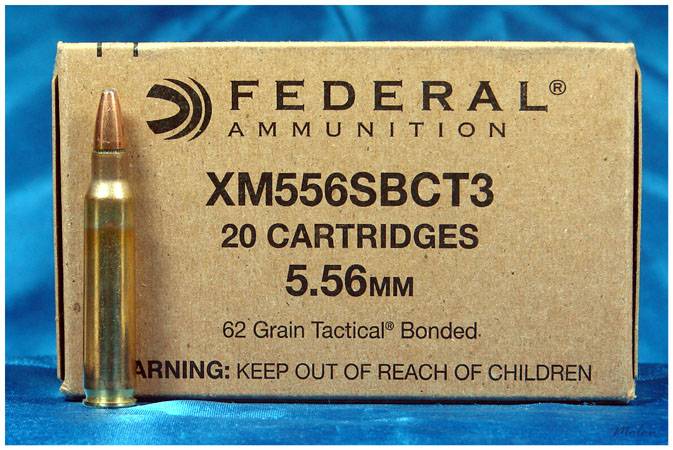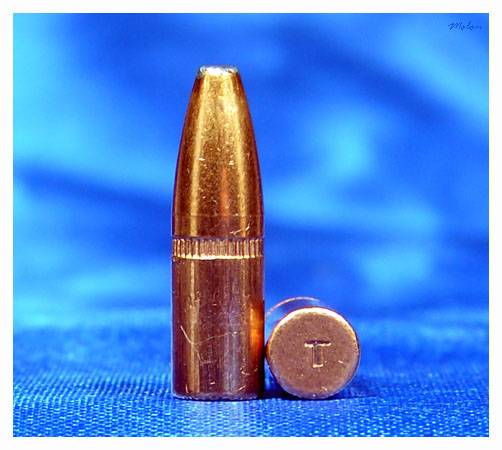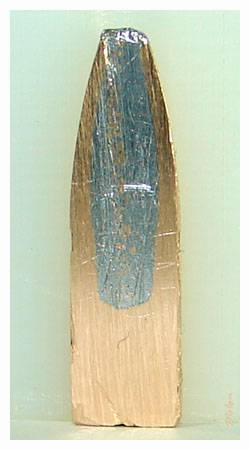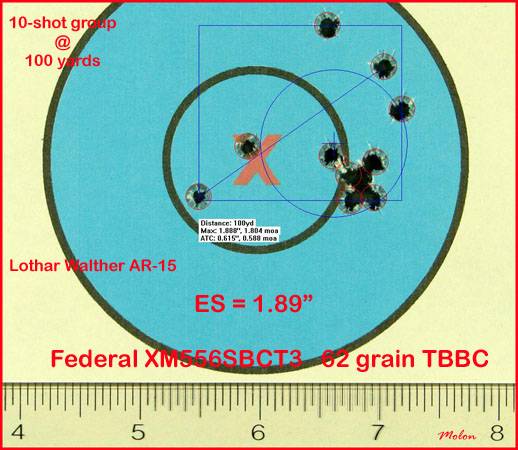Federal 62 Grain Trophy Bonded Tip
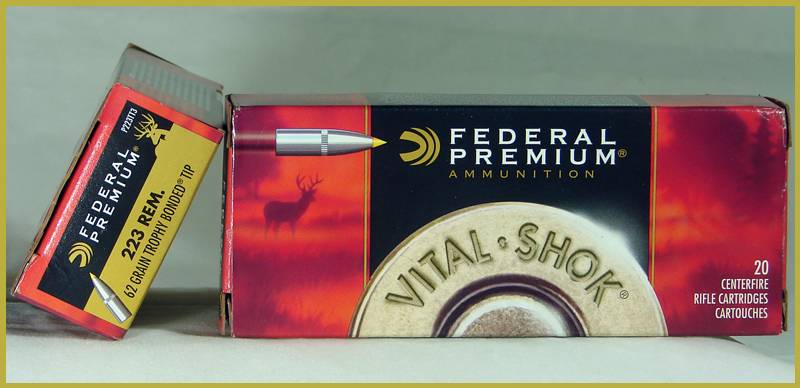
Federal introduced their 62 grain Trophy Bonded Tip ammunition, for 223 Remington, in 2015 (part # P223TT3). As the name implies, this ammunition features a 62 grain bullet that has a bonded construction and a "high-performance polymer tip".
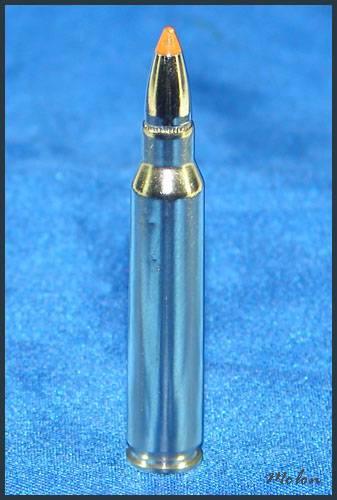
This version of the Trophy Bonded Tip projectile does closely resemble the construction of the standard 62 grain Trophy Bonded Bear Claw bullet. Federal claims that the Trophy Bonded Tip bullet has a G1 ballistic coefficient of 0.255; which gives it a slight bump over the 0.224 BC of the standard 62 grain Trophy Bonded Bear Claw bullet. The projectile, as well as the case, for this load are nickel plated.
The bullet has a cannelure and the signature “T” stamped on the base of the bullet. The case mouth is crimped, but there is no case mouth sealant on the lot of this ammunition that I tested. This ammunition is primed with Federal's Gold Medal primer and the primer pocket is crimped and sealed. The case has a head-stamp that read "FC 15 223 REM".
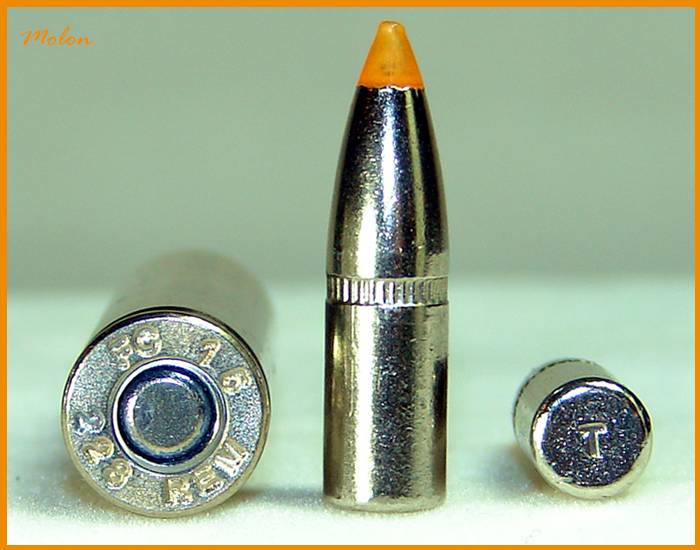
TBBC on the left, Trophy Bonded Tip on the right.
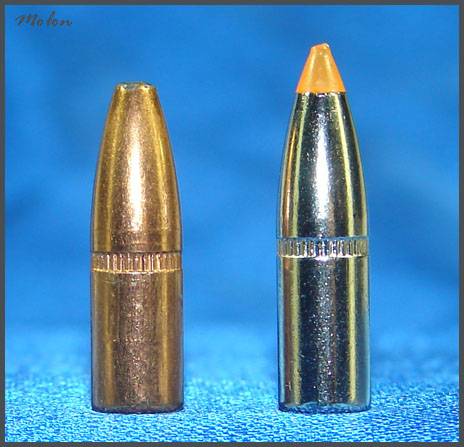
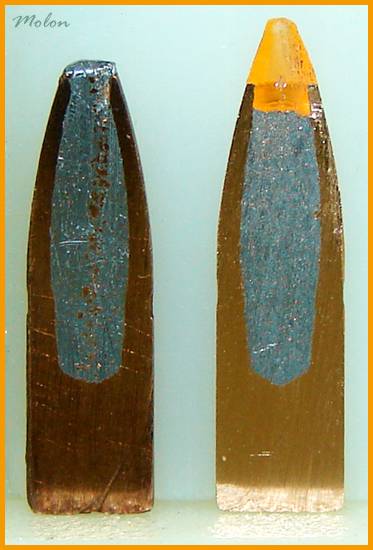
This ammunition is charged with a flattened “ball” powder. Federal states that this powder is a “specially formulated propellant with copper-reducing additives.” That quote strikes me as rather odd, since the Trophy Bonded Tip projectile is nickel-plated.
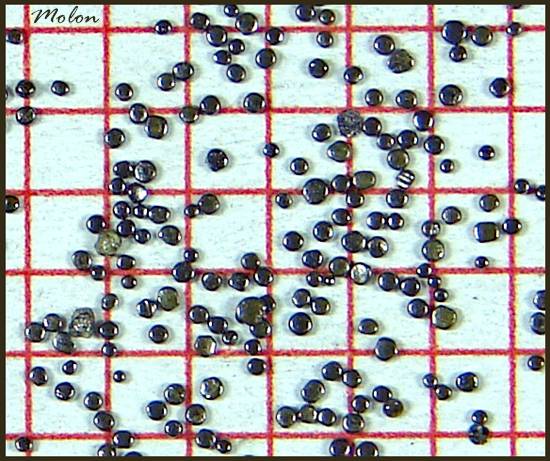
Velocity
I chronographed the Federal 62 grain Trophy Bonded Tip ammunition from a semi-automatic AR-15 with a chrome-lined, NATO chambered, 20” Colt M16A2 barrel with a 1:7” twist.

Chronographing was conducted using an Oehler 35-P chronograph with “proof screen” technology. The Oehler 35P chronograph is actually two chronographs in one package that takes two separate chronograph readings for each shot and then has its onboard computer analyze the data to determine if there is any statistically significant difference between the two readings. If there is a statistically significant difference in the readings, the chronograph “flags” the shot to let you know that the data is invalid. There was no invalid data flagged during this testing.
The velocity stated below is the muzzle velocity as calculated from the instrumental velocity using Oehler’s Ballistic Explorer software program. The string of fire consisted of 10 rounds over the chronograph.
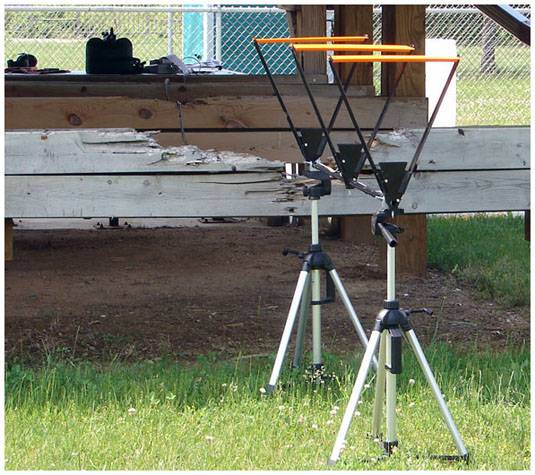
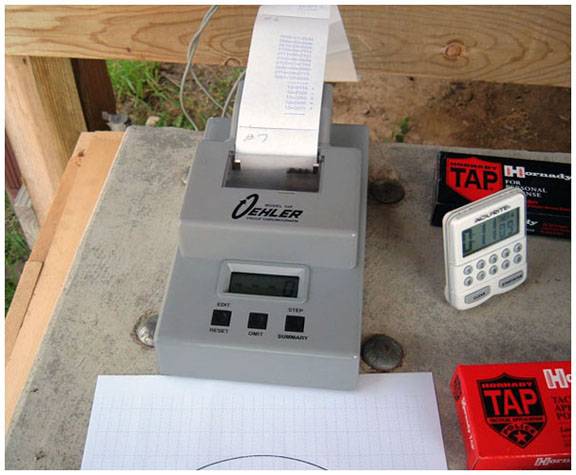
Each round was single-loaded and cycled into the chamber from a magazine fitted with a single-load follower. The bolt locked-back after each shot allowing the chamber to cool in between each shot. This technique was used to mitigate the possible influence of “chamber-soak” on velocity data. Each new shot was fired in a consistent manner after hitting the bolt release. Atmospheric conditions were monitored and recorded using a Kestrel 4000 Pocket Weather Tracker.
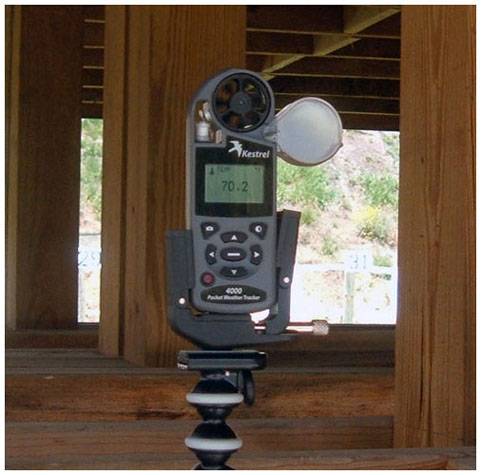
Atmospheric conditions
Temperature: 75 degrees F
Humidity: 33%
Barometric pressure: 30.05 inches of Hg
Elevation: 950 feet above sea level
The muzzle velocity for the 10-shot string of the Federal 62 grain Trophy Bonded Tip ammunition fired from the 20” Colt barrel was 2882 FPS with a standard deviation of 18 FPS and a coefficient of variation of 0.63%.
For those of you who might not be familiar with the coefficient of variation (CV), it is the standard deviation, divided by the mean (average) muzzle velocity and then multiplied by 100 and expressed as a percentage. It allows for the comparison of the uniformity of velocity between loads in different velocity spectrums; e.g. 77 grain loads running around 2,650 fps compared to 55 grain loads running around 3,250 fps.
For comparison, the mil-spec for M193 allows for a coefficient of variation of approximately 1.2%, while one of my best 77 grain OTM hand-loads, with a muzzle velocity of 2639 PFS and a standard deviation of 4 FPS, has a coefficient of variation of 0.15%.

Accuracy
I conducted an accuracy (technically, precision) evaluation of the Federal 62 grain Tropjy Bonded Tip ammunition following my usual protocol. This accuracy evaluation used statistically significant shot-group sizes and every single shot in a fired group was included in the measurements. There was absolutely no use of any group-reduction techniques (e.g. fliers, target movement, butterfly shots).
The shooting set-up will be described in detail below. As many of the significant variables as was practicable were controlled for. Also, a control group was fired from the test-rifle used in the evaluation using match-grade, hand-loaded ammunition; in order to demonstrate the capability of the barrel. Pictures of shot-groups are posted for documentation.
All shooting was conducted from a concrete bench-rest from a distance of 100 yards (confirmed with a laser rangefinder.) The barrel used in the evaluation was free-floated. The free-float handguards of the rifle rested in a Sinclair Windage Benchrest using a Sinclair benchrest forend adaptor, while the stock of the rifle rested in a Protektor bunny-ear rear bag. Sighting was accomplished via a Leupold VAR-X III set at a magnification of 25X and adjusted to be parallax-free at 100 yards. A mirage shade was attached to the free-float handguard. Wind conditions on the shooting range were continuously monitored using a Wind Probe. The set-up was very similar to that pictured below.
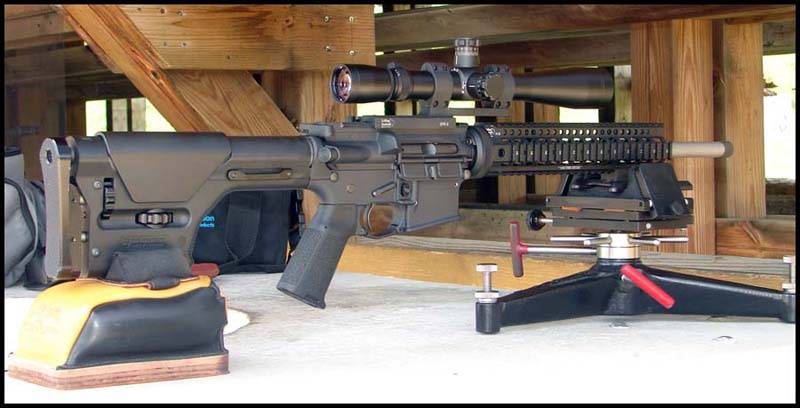
The Wind Probe.
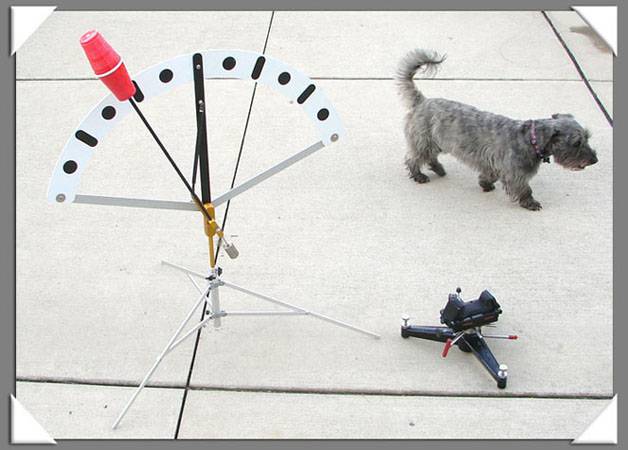
The test vehicle for this evaluation was one of my semi-automatic precision AR-15s with a 20” stainless-steel Lothar Walther barrel. The barrel has a 223 Wylde chamber with a 1:8” twist. Prior to firing the Federal 62 grain Trophy Bonded Tip ammunition, I fired a 10-shot control group using match-grade hand-loads topped with a 62 grain OTM bullet. That group had an extreme spread of 0.81". Prior to firing the groups of record, several "seasoning rounds" of the Trophy Bonded Tip ammunition were fired.
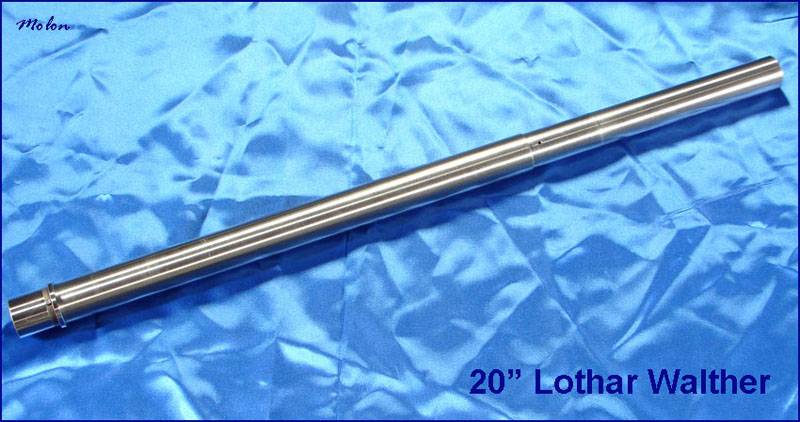
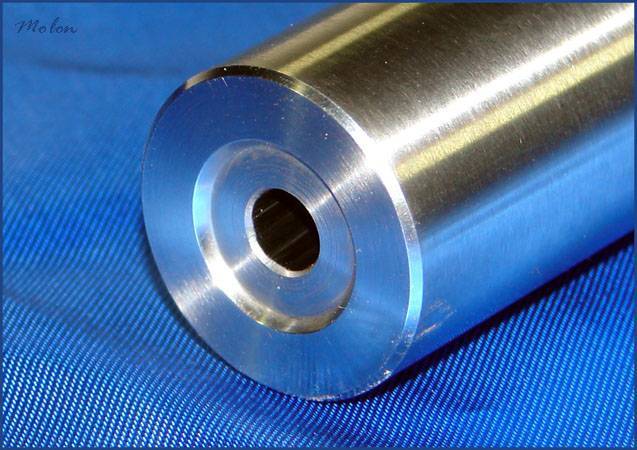
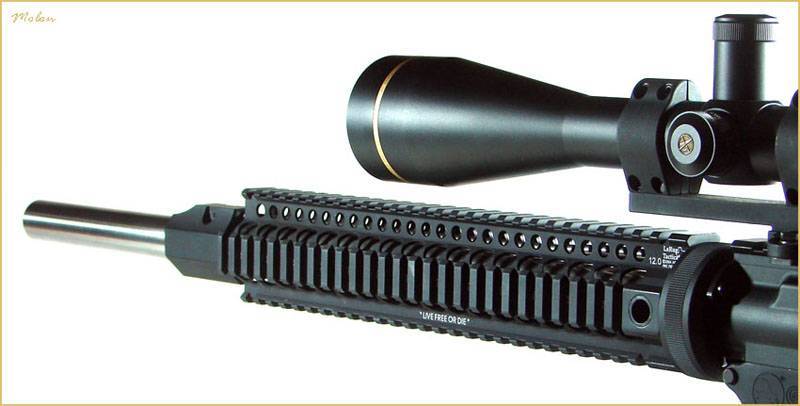
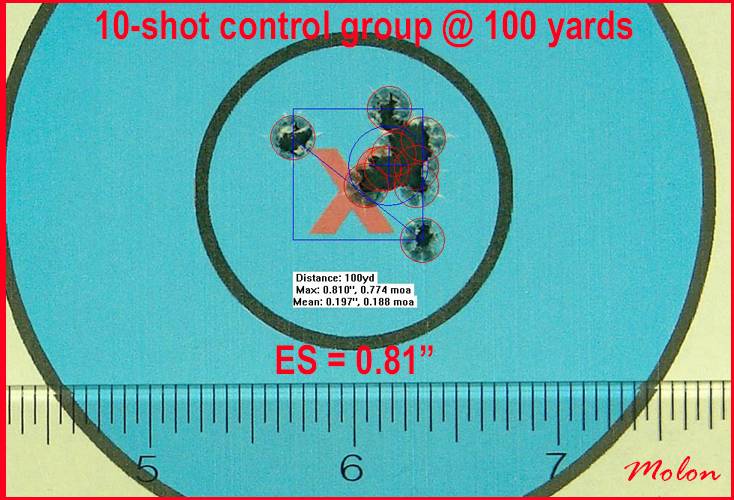
Three, 10-shot groups of the 62 grain Trophy Bonded Tip ammunition were fired in a row with the resulting extreme spreads:
1.42"
1.79"
1.63"
for a 10-shot group average extreme spread of 1.61”. The three, 10-shot groups were over-layed on each other using RSI Shooting Lab to form a 30-shot composite group. The mean radius for the 30-shot composite group was 0.44”.
The smallest 10-shot group . . .
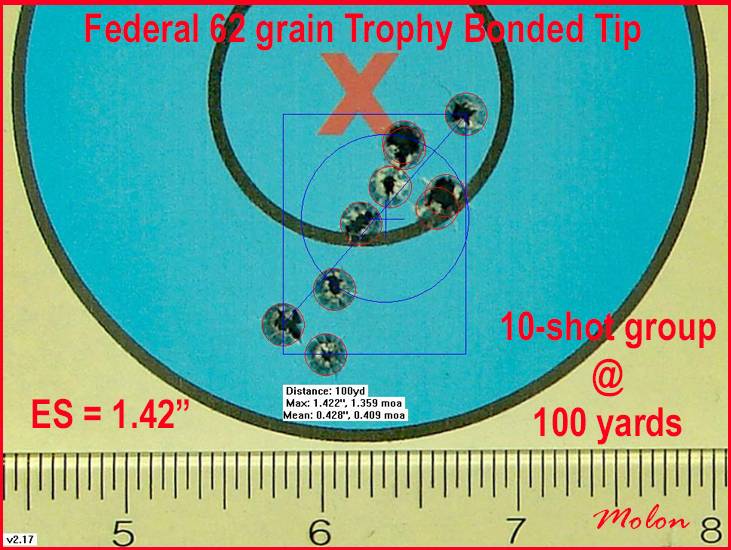
The 30-shot composite group . . .
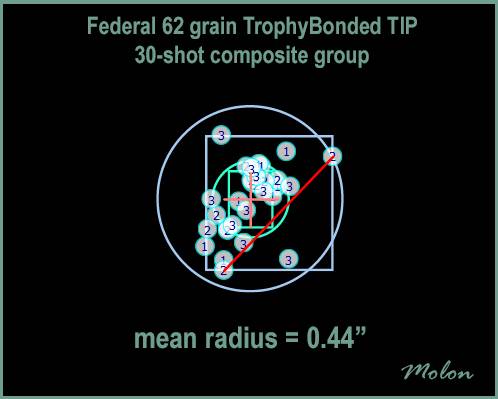
No canines were harmed during the testing of this ammunition.

....

Federal introduced their 62 grain Trophy Bonded Tip ammunition, for 223 Remington, in 2015 (part # P223TT3). As the name implies, this ammunition features a 62 grain bullet that has a bonded construction and a "high-performance polymer tip".

This version of the Trophy Bonded Tip projectile does closely resemble the construction of the standard 62 grain Trophy Bonded Bear Claw bullet. Federal claims that the Trophy Bonded Tip bullet has a G1 ballistic coefficient of 0.255; which gives it a slight bump over the 0.224 BC of the standard 62 grain Trophy Bonded Bear Claw bullet. The projectile, as well as the case, for this load are nickel plated.
The bullet has a cannelure and the signature “T” stamped on the base of the bullet. The case mouth is crimped, but there is no case mouth sealant on the lot of this ammunition that I tested. This ammunition is primed with Federal's Gold Medal primer and the primer pocket is crimped and sealed. The case has a head-stamp that read "FC 15 223 REM".

TBBC on the left, Trophy Bonded Tip on the right.


This ammunition is charged with a flattened “ball” powder. Federal states that this powder is a “specially formulated propellant with copper-reducing additives.” That quote strikes me as rather odd, since the Trophy Bonded Tip projectile is nickel-plated.

Velocity
I chronographed the Federal 62 grain Trophy Bonded Tip ammunition from a semi-automatic AR-15 with a chrome-lined, NATO chambered, 20” Colt M16A2 barrel with a 1:7” twist.

Chronographing was conducted using an Oehler 35-P chronograph with “proof screen” technology. The Oehler 35P chronograph is actually two chronographs in one package that takes two separate chronograph readings for each shot and then has its onboard computer analyze the data to determine if there is any statistically significant difference between the two readings. If there is a statistically significant difference in the readings, the chronograph “flags” the shot to let you know that the data is invalid. There was no invalid data flagged during this testing.
The velocity stated below is the muzzle velocity as calculated from the instrumental velocity using Oehler’s Ballistic Explorer software program. The string of fire consisted of 10 rounds over the chronograph.


Each round was single-loaded and cycled into the chamber from a magazine fitted with a single-load follower. The bolt locked-back after each shot allowing the chamber to cool in between each shot. This technique was used to mitigate the possible influence of “chamber-soak” on velocity data. Each new shot was fired in a consistent manner after hitting the bolt release. Atmospheric conditions were monitored and recorded using a Kestrel 4000 Pocket Weather Tracker.

Atmospheric conditions
Temperature: 75 degrees F
Humidity: 33%
Barometric pressure: 30.05 inches of Hg
Elevation: 950 feet above sea level
The muzzle velocity for the 10-shot string of the Federal 62 grain Trophy Bonded Tip ammunition fired from the 20” Colt barrel was 2882 FPS with a standard deviation of 18 FPS and a coefficient of variation of 0.63%.
For those of you who might not be familiar with the coefficient of variation (CV), it is the standard deviation, divided by the mean (average) muzzle velocity and then multiplied by 100 and expressed as a percentage. It allows for the comparison of the uniformity of velocity between loads in different velocity spectrums; e.g. 77 grain loads running around 2,650 fps compared to 55 grain loads running around 3,250 fps.
For comparison, the mil-spec for M193 allows for a coefficient of variation of approximately 1.2%, while one of my best 77 grain OTM hand-loads, with a muzzle velocity of 2639 PFS and a standard deviation of 4 FPS, has a coefficient of variation of 0.15%.

Accuracy
I conducted an accuracy (technically, precision) evaluation of the Federal 62 grain Tropjy Bonded Tip ammunition following my usual protocol. This accuracy evaluation used statistically significant shot-group sizes and every single shot in a fired group was included in the measurements. There was absolutely no use of any group-reduction techniques (e.g. fliers, target movement, butterfly shots).
The shooting set-up will be described in detail below. As many of the significant variables as was practicable were controlled for. Also, a control group was fired from the test-rifle used in the evaluation using match-grade, hand-loaded ammunition; in order to demonstrate the capability of the barrel. Pictures of shot-groups are posted for documentation.
All shooting was conducted from a concrete bench-rest from a distance of 100 yards (confirmed with a laser rangefinder.) The barrel used in the evaluation was free-floated. The free-float handguards of the rifle rested in a Sinclair Windage Benchrest using a Sinclair benchrest forend adaptor, while the stock of the rifle rested in a Protektor bunny-ear rear bag. Sighting was accomplished via a Leupold VAR-X III set at a magnification of 25X and adjusted to be parallax-free at 100 yards. A mirage shade was attached to the free-float handguard. Wind conditions on the shooting range were continuously monitored using a Wind Probe. The set-up was very similar to that pictured below.

The Wind Probe.

The test vehicle for this evaluation was one of my semi-automatic precision AR-15s with a 20” stainless-steel Lothar Walther barrel. The barrel has a 223 Wylde chamber with a 1:8” twist. Prior to firing the Federal 62 grain Trophy Bonded Tip ammunition, I fired a 10-shot control group using match-grade hand-loads topped with a 62 grain OTM bullet. That group had an extreme spread of 0.81". Prior to firing the groups of record, several "seasoning rounds" of the Trophy Bonded Tip ammunition were fired.




Three, 10-shot groups of the 62 grain Trophy Bonded Tip ammunition were fired in a row with the resulting extreme spreads:
1.42"
1.79"
1.63"
for a 10-shot group average extreme spread of 1.61”. The three, 10-shot groups were over-layed on each other using RSI Shooting Lab to form a 30-shot composite group. The mean radius for the 30-shot composite group was 0.44”.
The smallest 10-shot group . . .

The 30-shot composite group . . .

No canines were harmed during the testing of this ammunition.

....
Last edited:


